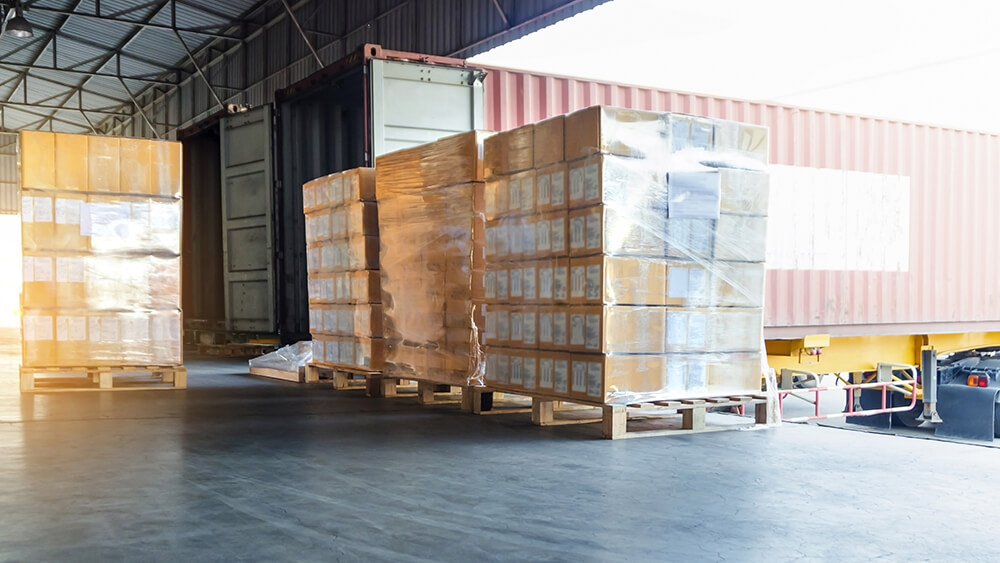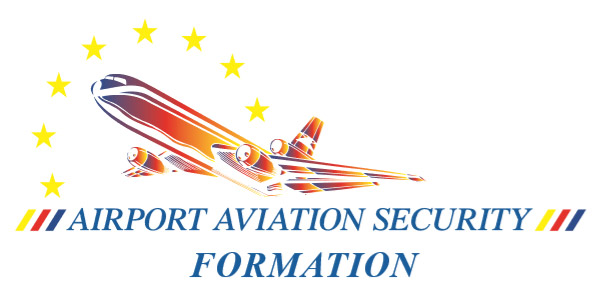AEO (Authorised Economic Operator) is a status granted to any economic operator who meets common criteria relating to the control systems, financial solvency and track record of the operator and, in certain cases, to appropriate safety and security standards.
Person authorised to use the home procedure for export, for example by noting the goods' exit in their records and notifying the customs authorities of the goods' exit from their premises according to the specifications contained in the authorisation.
Contraction of the terms "admission temporaire" and "temporary admission". International convention signed in Brussels on 6 December 1961 allowing the free movement of certain goods, free of all duties and taxes on the territory of all the co-signing
states.
In countries that have signed the convention, the A.T.A. carnet replaces the various customs documents normally required at the successive stages of an operation for temporary use of goods abroad: temporary exportation from the country issuing
the carnet, transit, re-exportation from the country of use and re-importation into the issuing country, temporary importation into the country of use.
Combination of the French and English terms "admission temporaire" and "tempory admission".
Procedure established by the 1961 Brussels Convention which allows easier circulation of commercial samples and professional or exhibition equipment by using a simplified document (booklet with detachable sheets) for temporary export, transit
and temporary admission.
This customs document is used for the temporary exportation, transit and temporary admission of goods intended for specific purposes, such as presentations, exhibitions or fairs, professional equipment or commercial samples.
Person authorised to carry out transit operations without presenting the goods or the corresponding transit declarations at the office of departure.
Natural or legal person having obtained authorisation from the Minister in charge of customs to make a profession of declaring goods in detail, in the name and on behalf of others, and to carry out the customs formalities related to such declarations.
This person may act as a direct or indirect representative.
Agreement that must be obtained from the authorities so that certain operations envisaged by natural or legal persons can be carried out or benefit from a favourable financial or tax system.
Deed whereby the customs authorities authorise the release of goods, placed under surveillance, for the purposes laid down by the customs procedure under which they are placed.
Document issued, in exchange for a deposit, by the agricultural offices for the exportation of certain agricultural products to countries outside the European Union.
Document attached to the declaration and stamped by the customs service in proportion to the quantities exported. Document issued as a single original.
Document issued by agricultural offices in mainland France or regional customs collectors in the overseas departments for the importation of certain agricultural products.
This document is issued in exchange for a deposit, as a single original with no possibility of duplication. If the document is lost, the operator loses their deposit.
Document attesting to the origin of goods and drawn up by an authorised authority in the country of origin.
The document is of indicative value and is in no way binding on the import customs service.
Administrative act which constitutes the final phase of a customs or accounting operation and ensures the proper completion of formalities by cross-checking of documents.
1) Convention on the international carriage of goods by road.
2) Transport document issued in the context of international carriage by road and known as the “CMR consignment note”.
Goods are or become Community goods when they are:
entirely obtained in the Community customs territory, without the addition of goods imported from countries or territories not forming part of the Community customs territory
imported from countries or territories not forming part of the Community customs territory and released into free circulation
obtained in the Community customs territory, derived from the goods referred to in the second point exclusively, or from the goods referred to in the first and second points.
Products resulting from working carried out under the inward or outward processing procedure.
Principal compensating products are those for the production of which the arrangement has been authorised, while secondary compensating products are by-products of the processing operations.
Sending of goods from France to another European Union country.
In the customs sense, and in intra-Community trade, this term refers in particular to the sending of goods to or from areas of the common customs territory excluded from the Community fiscal area, therefore requiring certain formalities (e.g.
the Canary Islands).
Completion of the formalities on arrival results in an introduction of goods.
Facility for customs declarants to remove their goods as checks are performed and before payment of duties and taxes.
Facility granted by agreeing with the regional collector to pay an annual bond, whereby the debtor undertakes to pay the duties and taxes due within thirty days after they have been taken into account, plus an extra charge of one per thousand.
In the field of excise duty, the facility for the operator to defer payment of duty until thirty days after the liquidation credit end date by paying a deposit.
Procedures to carry out for an import or export operation in order to obtain the free transfer of ownership of the goods. Exports and imports are subject to payment of duties and taxes according to their nature and the exporting or importing country.
Deed whereby a person indicates their desire to place goods under one of the customs procedures provided for in the Community Customs Code.
Community regulations generally stipulate that the declaration must be based on the SAD model.
All the formalities that importers or exporters must complete at a customs office, in the correct order, to place their goods under a customs procedure and to obtain their release.
The Community Customs Code provides for 8 customs procedures:
release into free circulation,
transit,
customs warehousing,
inward processing,
processing under customs control,
temporary admission,
outward processing,
export.
Status of goods as "Community goods" or "non-Community goods". See: Community goods and non-Community goods.
1. Customs procedure allowing the storage of:
non-Community goods without these being subject to import duties or commercial policy measures; and Community goods with a view to applying measures normally requiring their exportation.
2. Any place approved by the customs authorities and subject to their control, in which goods may be stored.
Person making a customs declaration in their own name or person in whose name a customs declaration has been made. In the case of the transit procedure, the person is called the "principal obligor".
These are goods that can be used for civilian and military purposes alike.
The following customs procedures require authorisation and in certain cases an assessment of their economic impact:
customs warehousing
inward processing
processing under customs control
temporary admission
outward processing.
These are procedures that under certain conditions suspend duties, taxes and other external trade formalities.
There are economic procedures for storage (warehousing), processing (inward and outward processing) or use (temporary admission). They arise with imports and exports alike.
Export Control System: system for controlling exports
European Economic Community.
Document also called "movement certificate" which certifies the origin of goods in preferential Community systems (excluding GSP).
Association created by the Stockholm Convention of 4 January 1960. It originally consisted of Austria, Iceland, Finland, Norway, Switzerland, Liechtenstein and Sweden.
Austria, Sweden and Finland are now members of the European Union. Iceland, Liechtenstein and Norway are part of the European Economic Area.
Customs procedure allowing Community goods to be taken out of Community customs territory in compliance with export restrictions.
Please note: Although the overseas departments (Guadeloupe, Martinique, Guyana, Réunion) are part of the customs and statistical territory of the European Union, consignments from mainland France to the overseas departments and reciprocally
from the overseas departments to mainland France or the other EU member states are considered exports. These exchanges are carried out under cover of an SAD-type customs declaration.
Person on whose behalf the export declaration is made and who is the owner of the goods in question at the time of its acceptance, or has a similar right of disposal.
In other regulatory contexts, this may be the person associated with the export contract, the holder of the export licence or the beneficiary of the export refund.
Trade between a European Union member country and a third country.
Situation of goods imported from third countries, benefiting from Community customs status due to the application of Community tariff measures and commercial policy to them.
Regime instituted by a treaty or agreement, bilateral or multilateral, providing for an area within which trade is carried out free of customs duties and quantitative restrictions.
This regime excludes the concept of a customs union (no external tariff common to the member countries).
Example: EU, EFTA, NAFTA, EEA…
Bilateral or plurilateral agreement whereby two or more countries adopt the same customs tariff: goods move freely within the limits of this union. See: free trade.
Parts of the Community customs territory in which:
import duties and commercial policy measures are suspended for non-Community products and
Community products can benefit from measures which in principle entail their exportation.
The forwarding agent is a service provider who takes care of all operations relating to its customers goods on their behalf: breaking bulk, handling, storage, commercial formalities, customs formalities...
Customs clearance procedure which allows the completion of customs formalities directly on the premises of the procedure-holder by recording operations in stock records.
A summary declaration of regularisation is filed later.
Customs office where all the operations of a company are centralised in a particular procedure of which it is the beneficiary (for example a home customs clearance procedure).
In the case of a single home country, the home customs office is the one where credits, payments and clearance formalities are centralised (stock records and regularisation declarations). In this procedure, the offices applicable to the various
sites from which physical import and/or export operations are carried out are called "home offices".
Goods placed under a suspension procedure and goods subject to the reimbursement system, in an inward processing context.
Transit procedure set up by a convention signed in Geneva and which allows a sealed vehicle combination, transporting goods along a specific route and within certain time limits, to transport goods through the territory of several signatory states without systematic checking of its load at border crossings, and with suspension of the national duties and taxes of the countries passed through under cover of a bonded carnet stamped by the customs authorities.
Inside the European Union.
From a tax standpoint, these are deliveries of goods dispatched or transported into the territory of another Community member state and intended for a natural or legal person.
Trade between European Union member states.
Arrival of Community goods into national territory.
In the customs sense, and in intra-Community trade, this term refers to the entry into the Community fiscal area of goods from outside areas (e.g. the Canary Islands) or vice versa, thus incurring certain formalities.
The term consignment describes this sending of goods at the departure stage.
Economic procedure which allows the temporary importation of third country goods (raw materials, equipment or spare parts) into the Community customs territory in order to transform, work on, repair or assemble them, or incorporate them into other
manufactured items and then re-export the products obtained (finished products) while benefiting from an exemption from duties and taxes and/or commercial policy control measures normally applicable to imported goods.
This exemption can be obtained in two ways:
the suspension system: this procedure is provided for goods whose re-export outside the EC is certain from the moment they are imported. The various taxes and commercial policy measures are then suspended provided that the products obtained
under the procedure are subsequently re-exported
the reimbursement system: this procedure is only recommended if the re-export of goods is only partial or is affected by eventualities which are hard to control. Duties are collected upon import, then reimbursed when the compensating products
are re-exported.
Introduction of goods from a third country into the territory of the European Union (E.C.).
Approved location for the temporary storage of goods awaiting a customs destination.
After their time at this location, which is limited, the goods must be assigned a customs procedure.
Movement Reference Number in an NCTS context.
Electronic data exchange system constituting a transit declaration and intended to replace the traditional paper procedure, both within the Community and in EFTA countries (Iceland, Norway, Switzerland).
Goods not meeting the criteria defined for Community goods.
Customs office where goods are presented at the end of a transit operation.
Goods originating in a country are goods wholly obtained in that country or which have undergone the last substantial, economically justified phase of processing or working there at an enterprise equipped for this purpose, so that this operation
results in a new product or constitutes an important manufacturing stage.
In origin terms, the European Union is considered one single country.
The concept of origin must not be confused with that of "provenance".
Economic procedure which makes it possible to export Community goods temporarily, outside Community customs territory, with a view to having them worked, assembled, transformed or repaired, and then to re-importing the products resulting from these operations, with total or partial exemption from duties and taxes.
Goods declared to customs are only available after payment of the duties and taxes payable to the Collector at the customs office where the operation is carried out.
The person designated as the actual recipient of the goods in the import declaration. However, the customs declarant is jointly liable for payment of the tax.
Relating to the protection of plants or plant products.
Document issued by the plant protection services at the time of first introduction into Community territory.
Communication to the customs authorities, in the required forms, of the goods' arrival at the customs office or at any other place designated or approved by the customs authorities.
This refers to working, assembly, adaptation to other goods, transformation, repair, reconditioning and adjustment.
These terms cover:
the working of goods, including their erection, assembly, and adaptation to other goods,
the transformation of goods,
the repair of goods, including restoration and adjustment as well as
the use of certain goods, which are not found in the compensating products but which enable or facilitate the obtaining of these products, excluding fuel oil, energy, lubricants,
equipment and tools.
One of the two variants of the inward processing procedure, whereby import duties are paid upon release into free circulation and reimbursed when the manufactured products or goods are re-exported as seen.
Customs procedure which confers on third country goods the status of Community goods after application of commercial policy measures, completion of the other formalities provided for importation into European Community customs territory, and collection of the duties legally due.
The returns procedure allows Community goods re-imported as seen into the customs territory of the European Union, after having been exported permanently or temporarily, to be exempt from import duties during this re-importation.
See: Release for consumption
Range of goods for which the Community's guaranteeing associations have come out of the TIR guarantee.
Customs clearance procedure requiring prior authorisation from the authorities. It makes it possible to clear goods at the customs office or at any other place designated or approved by the service.
This customs clearance is carried out by filing a simplified declaration (for example an incomplete SAD) including the information necessary for the identification of the goods and the application of regulations, depending on the customs procedure.
Register of goods movements kept by the operator of a facility authorised for the storage or processing of goods under customs control.
Customs clearance stock records: CMD
Customs clearance stock records.
The external Community transit procedure (T1) mainly applies to the movement of non-Community goods. It suspends the applicable duties and other taxes until the goods reach their destination in the Community.
However the external Community transit procedure (T1) is also compulsory for movement of certain Community goods when they are being exported to one or more EFTA countries, or have to pass through them, with application of the convention relating
to a procedure. Document used for:
external Community transit: circulation of third country goods with suspension of all duties and taxes in European Union territory.
export to a third country of Community goods under the CAP.
The internal Community transit procedure (T2) applies to Community goods sent from one point in Community customs territory to another via the territory of one or more EFTA countries in accordance with the common transit procedure convention.
It does not apply to goods transported exclusively by sea or air.
Document used for internal Community transit: movement of Community goods on European Union territory. Delivery to another member state via an EFTA or VISEGRAD country.
Document used for trade of Community goods with a part of Community customs territory that has a special tax status (e.g. French overseas departments)
Document consisting of a copy of the single administrative document (SAD) and certifying the Community-based nature of goods whose status must be established and which have not circulated under T2.
Person liable for VAT in France who undertakes:
to complete the formalities incumbent on a person established outside France and liable for VAT or obliged to meet declaration requirements and, in the case of taxable operations, to pay VAT on behalf of that person.
The temporary admission regime allows the temporary importation, with total or partial exemption from customs duties and taxes, of goods from outside the European Union intended to be re-exported as seen and without being subject to the commercial policy measures.
Third countries are countries not belonging to the Community.
A distinction is made between associated or preferential third countries (linked to the EC by agreements) and non-preferential third countries.
The TIR Carnet is an internationally accepted customs transit and guarantee document. It is made up of detachable sheets and is used for international road transit operations.
1975 Customs Convention on the International Transport of Goods under Cover of TIR Carnets.
Monthly declaration of a statistical and fiscal nature made in the context of intra-Community trade by operators who have brought in or sent out goods. This is also referred to as an INTRASTAT declaration.
For tax purposes, consignments of goods made by or on behalf of a liable person to another member state, for the needs of their business and without any transfer of ownership (example: transfer of stock to a subsidiary or branch). These transactions
are treated like intra-Community deliveries/acquisitions which are exempt in the country of departure and taxable in the country of arrival.
Other than for tax purposes, refers to intra-Community trade in certain categories of goods for which formalities or obligations are still required due to their specific nature.
Examples include dual-use goods, weapons and munitions, waste…
Customs procedure which allows goods to be transported under customs control and suspends duties, taxes and other tax or customs measures applicable to these goods during their journey.
Complete transformation within the meaning of Articles 37 and 38 of the implementing provisions of the Community Customs Code.







